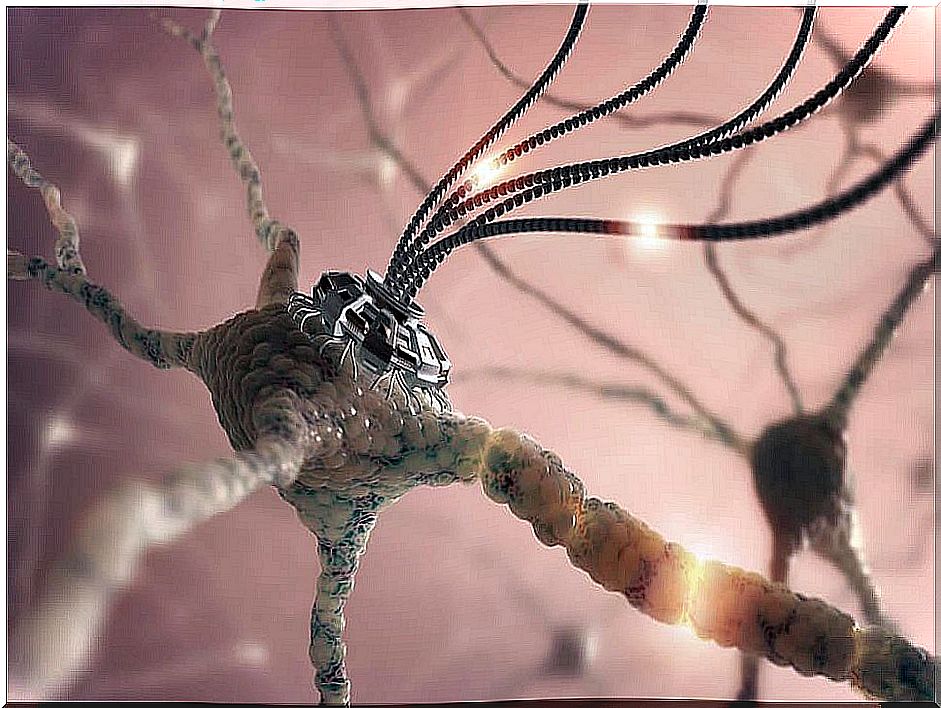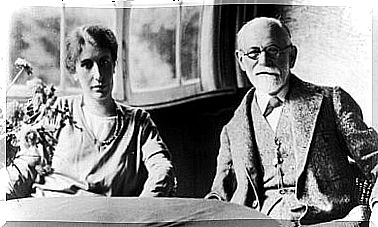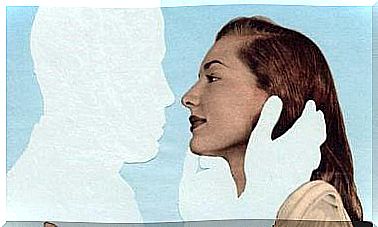Cognitive Neuroscience: A Way To Understand How The Brain Works

The goal of neuroscience has traditionally been to understand how the nervous system works. Both functionally and structurally, this discipline wants to know how the brain is organized. Recently, it has gone further, and wants not only to learn how the brain works, but also how it affects our behavior, our thoughts and our emotions.
Connecting the physical brain to the conceptual mind is what cognitive neuroscience does. It is a mixture of neuroscience and cognitive psychology. The latter is about knowledge of higher functions such as memory, language and attention. So the main goal of cognitive neuroscience is to relate brain function to our cognitive abilities and behaviors.
Newly developed techniques have activated new research in this field. Imaging studies have made it easier to link concrete structures with different functions. One tool is especially useful here: functional magnetic resonance imaging, fMRI. Tools such as non-invasive transcranial magnetic stimulation have also been developed to treat various pathological conditions.
The beginning of neuroscience
One cannot talk about the beginnings of neuroscience without mentioning Santiago Ramon y Cajal, the creator of the doctrine of the neuron. His contribution to the problems of development, degeneration and regeneration of the nervous system is still important today, and researchers are constantly adding to his work. If one had to date the beginning of neuroscience, it would be the nineteenth century.

The discipline developed along with the development of the microscope. Experimental techniques, such as staining tissues, and research on the structure and functionality of the nervous system also contributed.
But neuroscience and our understanding of how the brain works has grown out of many different areas of knowledge. It can be said that many findings in neuroscience are interdisciplinary.
Anatomy, responsible for locating all the complex internal parts of the body, contributed significantly. Physiology has focused on how the body works. Pharmacology, in turn, has focused on external substances and their reactions in the body and our biochemistry, using substances secreted by the body itself, as neurotransmitters.
Psychology has also made important contributions to neuroscience through theories of behavior and thinking. Over the years, psychology has moved away from a localization perspective. This perspective believed that each area of the brain had a specific function. Now researchers are taking a more functional perspective with the goal of understanding the general function of the brain.
Cognitive neuroscience
Neuroscience is a broad scientific field. It includes everything from basic research to applied research that works with the consequences of underlying behavioral mechanisms. In neuroscience, cognitive neuroscience seeks to understand how higher functions such as language, memory and decision making work.
Cognitive neuroscience focuses on the neural substrates of mental processes. In other words, what is the effect of our behavior and thoughts on our brain? We have discovered specific areas of the brain that are responsible for sensory and motor functions, but these areas represent only a quarter of the total cerebral cortex.

The areas do not have a specific function. Instead, they are responsible for interpreting, integrating and coordinating sensory and motor functions. This makes them responsible for superior mental functions. The brain areas that control functions such as memory, thinking, emotions, consciousness and personality are much more difficult to find.
Memory is connected to the hippocampus, which is located in the middle of the brain. When it comes to emotions, we know that the limbic system controls thirst and hunger (hypothalamus), aggression (amygdala) and emotions in general. And it is in the cerebral cortex where the brain integrates cognitive abilities. This is where our capacity for consciousness is generated, where we establish relationships and make complex reasoning.
The brain and emotions
One area that cognitive neuroscience has helped us with is that of emotions. Emotions are crucial to human life. We all experience them . We express all emotions via visceral motor changes and stereotyped somatic and motor responses, especially movements of facial muscles.
Traditionally, research attributed emotions to the limbic system. This is still true, but we have discovered that other areas of the brain are also involved.
These other areas include the amygdala and orbital and medial aspects of the forehead. These areas work together to form an emotional motor system. The same structures that process emotional signals participate in other tasks, such as rational decision-making and even moral judgment.
The visceral motor nuclei and somatic motor neurons coordinate how we express emotions. Emotions and activation of the autonomic nervous system are closely linked.
Feeling any kind of emotion, such as fear or surprise, would be impossible without experiencing increased heart rate, sweating, trembling… It is part of what makes these emotions so rich.

Emotions are an adaptive tool that informs others about our state of mind. Common features have been demonstrated in how people express joy, sadness, anger, etc. In fact, research has observed similarities across different cultures. It is one of the ways we have to communicate and feel empathy with others.
Bibliography
Cavada, C. Sociedad Española de Neurociencia: Historia de la neurociencia. Retrieved from http://www.senc.es/es/antecedentes
Eriksson, PS, Perfilieva E., Bjork-Eriksson T., Alborn AM, Nordborg C., Peterson DA, Gage FH (1998). Neurogenesis in the Adult Human Hippocampus. Nature Medicine. 4 (11), 1313–1317.
Kandell ER, Schwartz JH and JessellTM (2001) Principles of Neurociencia . Madrid: McGraw-Hill / Interamericana.
Lupien SJ, King S., Meaney MJ, McEwen BS (2000). Child’s stress hormone levels correlate with mother’s socioeconomic status and depressive state. 976–980.
Purves, Augustine, Fitzpatrick, Hall, Lamantia, McNamara and Williams. (2007). Neurociencia ( Third edition) .Buenos Aires: Editorial Médica Panamericana.
Rizzolatti G., Craighero L. (2004) .The mirror-neuron system. 169–192.
Stern, Y. (2009). Cognitive reserve. Neuropsychology, 47 (10), 2015–2028. doi: 10.1016 / j.neuropsychologia.2009.03.004









